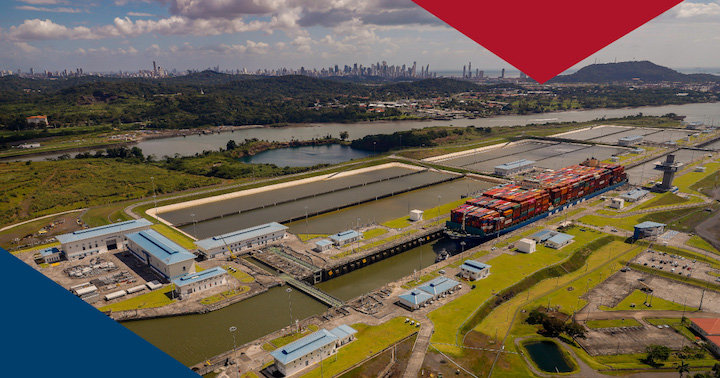This month marks the close of the Panama Canal’s 21st year under Panamanian administration. Looking back, our resilience this year attests to the experience and world-class workforce built over the decades. Despite facing new challenges in 2020, we upheld our long-standing commitments while continuing to create, capture and render value to our customers and Panama.

For one, we secured the continuity of our service by protecting our team and customers first. We introduced COVID-19 safety measures in March to keep the Panama Canal route operating safely and without interruptions throughout the entire year. To date, positive cases have not affected, nor have been linked to, our transit operations, and our staff remains on duty.
We also adapted our service to better partner with customers. In April, our team introduced relief measures to give customers added flexibility. These included the deferral of booking fee payments to maintain higher liquidity and the forfeiting of reservation fees for passenger vessels, the most affected segment during the pandemic. While these offerings were set to end on December 31, we extended them for six more months to help alleviate the prolonged impact of the COVID-19 pandemic on customers.
As the global economy began to recover, upending supply chains and traditional trade patterns, we worked with customers again to find ways to accommodate their needs. Since October, the Panama Canal, along with ports across the Americas, Asia, Europe, and beyond, experienced a sudden uptick in arrivals. This caused the convergence of high seasons across segments, such as container ships and liquefied natural gas (LNG). To accommodate the temporary surge in traffic, we have made operational adjustments, increasing the number of operational crews while maintaining safety protocols, to allow more vessels that arrive without reservations to transit per day.
Despite the urgent needs presented by the pandemic, we also advanced a key investment in the Panama Canal’s long-term sustainability. Earlier this year, when we implemented the freshwater fee, we announced our intent to undertake a portfolio of projects to guarantee water availability. In September, we launched the tender for our new water management system, with the contract to be awarded by late 2021. In the meantime, our water conservation measures proved successful in securing a steady draft. Our goal of ensuring that the value of our resources is factored into global supply chains, was also validated in both concept and price, when trading began in the first futures market for water in December. The Panama Canal will now begin 2021 offering a draft of 50 feet, the highest level allowed at the Neopanamax locks and exactly four feet more than was offered a year earlier.
Finally, we capped the year off by pledging the Panama Canal’s support for the global distribution of the COVID-19 vaccine. On December 21, the Panama Canal accepted an invitation to join the World Economic Forum’s Supply Chain & Transport Industry Action Group (SCT) to aid in the distribution of COVID-19 vaccines and medical supplies to Panama, Latin American and the Caribbean. Panama’s strategic location and strong logistics hub will be key in achieving the goals placed by UNICEF for the massive distribution of vaccines to the region.
While we see light at the end of the tunnel, the Panama Canal will continue to prioritize safety. This approach has allowed our customers to continue ferrying essential goods in 2020 and guarantees the essential tools to usher in a brighter future in 2021.
In the meantime, we will be ready and working to accommodate the global recovery, one safe transit at a time.

Follow us on social media: